If we turn back the clock to 2017, you’d find a struggling journalism student coming off of another hard year.
My first year in journalism school was difficult and taught me some serious life lessons, especially dealing with less-than-stellar grades and anxiety as an introvert.
While the second year was hard, I finally started to be in my element a little more. I got a great summer job that allowed me to help people and use the skills I developed from school, despite spraining my ankle before the job interview and pretending that I was okay.
It was also the year I befriended MobileSyrup gaming editor Brad Shankar, who not only became my best friend but also started my own relationship with the site.
Lastly, 2017 was the year that Sonic Mania came out, a game that delivered on all cylinders with its beautiful 2D sprites, fantastic soundtrack and great level design. My only real complaints was the reuse of stage aesthetics, keeping the archaic lives system and minor technical glitches.
At the time, I was convinced that Sonic Mania could kickstart a new era in which Sonic the Hedgehog could compete again with Mario as a platformer series. I also thought that we’d see the Blue Blur become a global phenomenon to younger fans, recalling a story where a little boy was mesmerized by the game on the TTC.
“While the level design (for the most part) and gameplay changes create a really fun experience, some frustrating elements and forgettable music result in the game stumbling across the finish line.”
Since then, while Sonic as an IP has become more successful, Sega hasn’t really capitalized on Sonic Mania’s success. Sonic Forces (which was tied to Mania) also made me distrust Sonic Team as a developer and we never got a sequel to Mania despite it being a no-brainer decision.
Now, Sonic Superstars finally serves as Sega’s follow-up to Mania, rectifying some of the critiques that the latter had along with delivering a new multiplayer experience akin to the New Super Mario Bros. After playing through Sonic Superstars, though, I can’t help but think that it’s a case where it aims to hit high and hard but slightly misses the mark.
Crossing new frontiers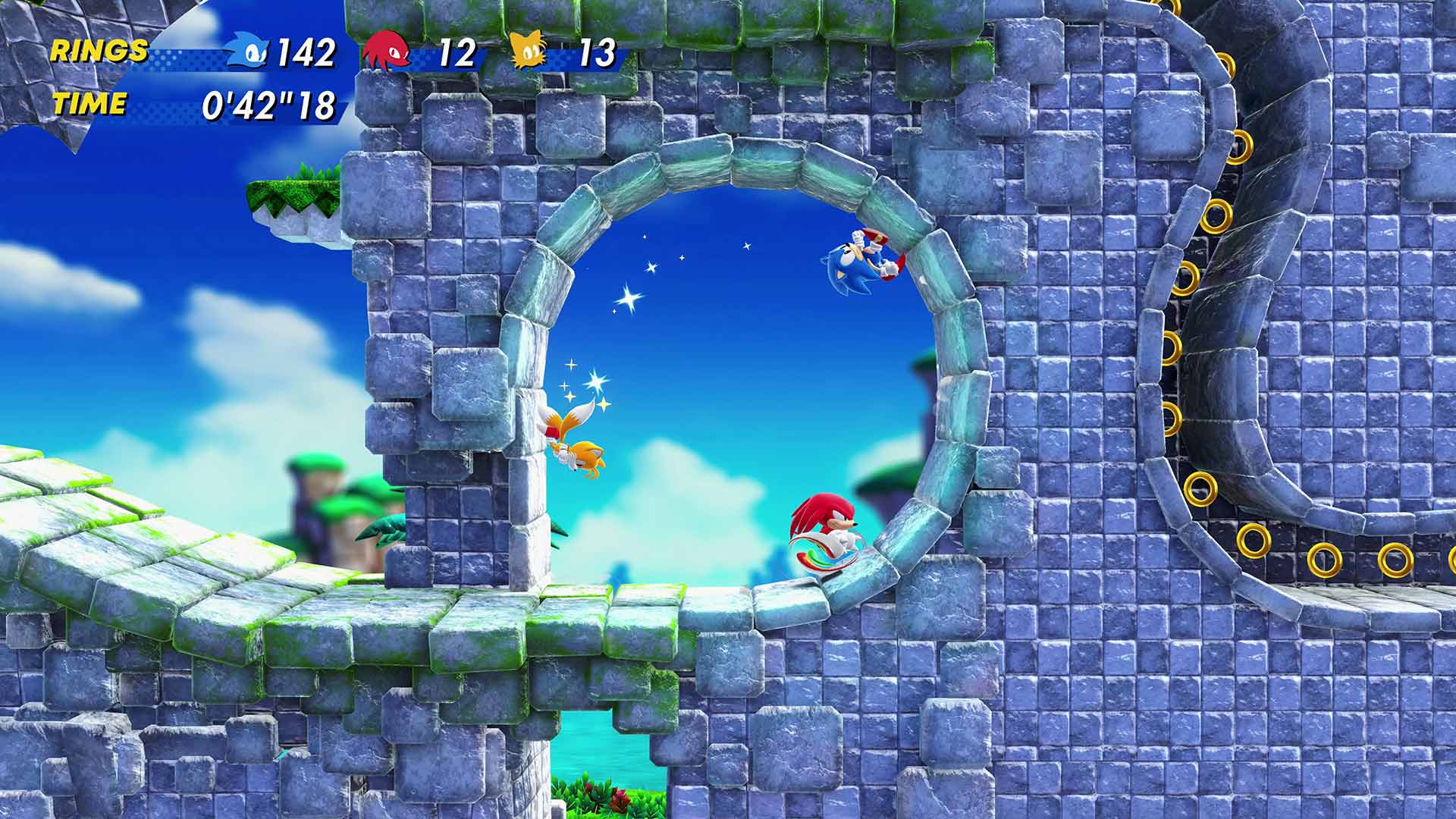
One of the first highlights that you notice after starting up a new playthrough (along with the 3D models) is that there is no Green Hill Zone. In fact, Sonic Superstars sports new stages throughout your experience, addressing the main concern that I had with Sonic Mania.
One of the reasons why I dislike Sonic games reusing the same stage aesthetics is because I feel that it holds back originality in stage design. It also eliminates any nostalgic charm that these inclusions have, serving as a reminder that Sonic Team finds it hard to think outside of the box.
In Superstars, it was so refreshing to go through various stages, discovering not only new areas but also different level gimmicks that created fun ways to reach the end goal. In a lot of ways, it reminded me of past 3D Sonic titles, as you had various unique-looking stages with gimmicks specific to that aesthetic, whether they were cyber networks or anti-gravity poles.
It also helps that Sonic Superstars has some of my favourite 2D level designs in a while. Most of the levels feel like a mixture of Sonic CD and Sonic 2, which is apparent right from the first stage. There are multiple pathways to approach each act and the game constantly rewards you for adventuring to different areas, whether it’s through rings, power-ups, medals (used to customize your avatar) or entrances to special stages.
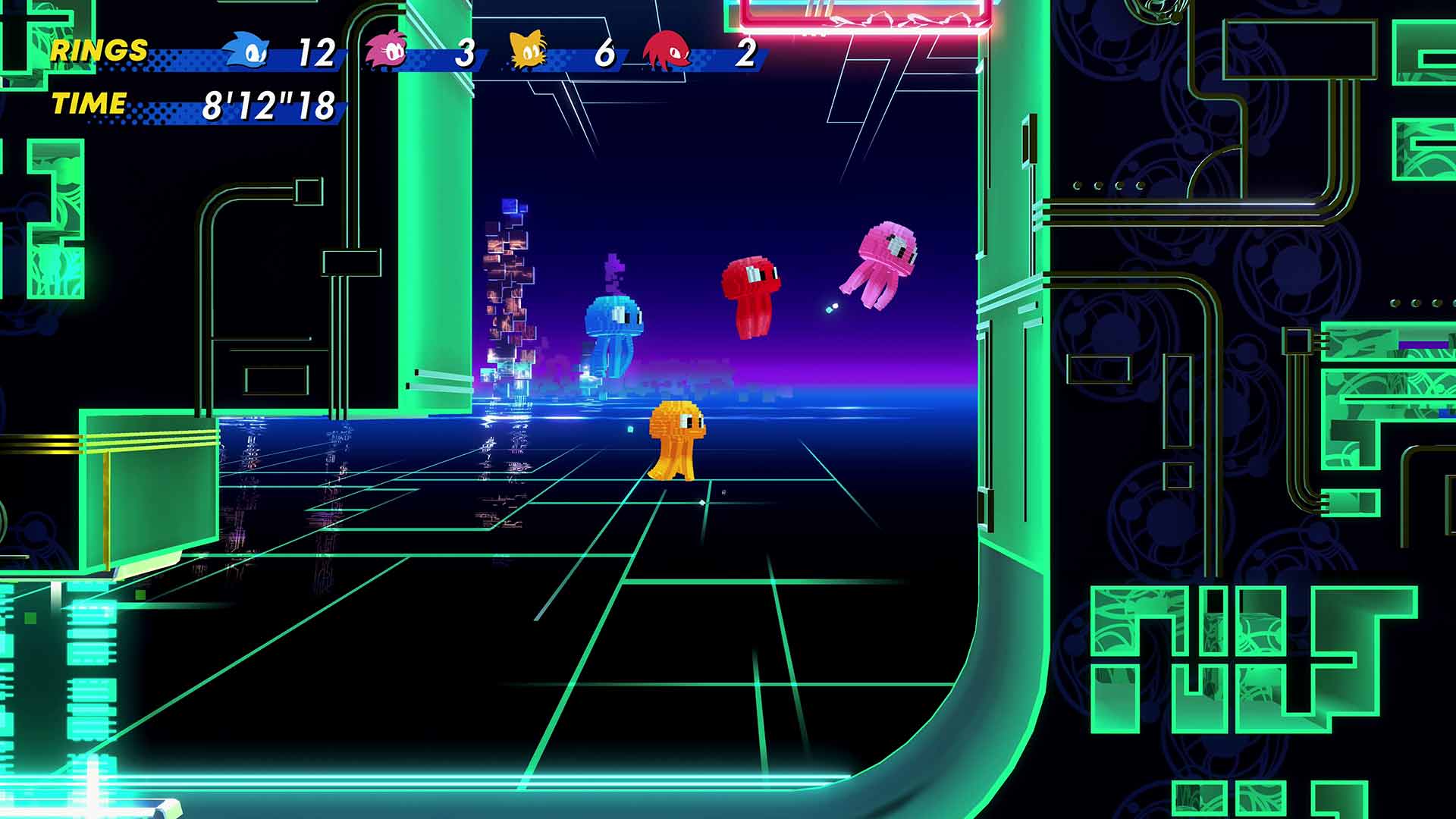 There are two kinds of special stages: one that rewards you with medals while the other features Chaos Emeralds. The former is reminiscent of the ones in Sonic 1, where you control Sonic to certain areas to collect the medal. The other special stage is the more interesting one, as you play in this Spider-Man-esque web-slinging mini-game to catch the emerald before you run out of rings. While these weren’t particularly challenging, they provided a fun experience, especially since I don’t like many of the special stages in Sonic games.
There are two kinds of special stages: one that rewards you with medals while the other features Chaos Emeralds. The former is reminiscent of the ones in Sonic 1, where you control Sonic to certain areas to collect the medal. The other special stage is the more interesting one, as you play in this Spider-Man-esque web-slinging mini-game to catch the emerald before you run out of rings. While these weren’t particularly challenging, they provided a fun experience, especially since I don’t like many of the special stages in Sonic games.
Collecting Chaos Emeralds also delivers Sonic Superstars‘ best gameplay change for a 2D Sonic game. Instead of just turning into Super Sonic by having all seven emeralds, each individual one grants you different abilities. These range from extra maneuverability to unique attacks that can defeat enemies with ease.
The reason why these Chaos Emerald abilities are the best addition to classic Sonic’s arsenal is because of their versatility in various situations. For example, using the red emerald in stages can lead to discovering new paths because it gives you a multi-directional airdash. On the other hand, these unique moves can give you an edge in boss fights, such as the blue emerald that spawns multiple Sonics to decimate enemies on the screen.
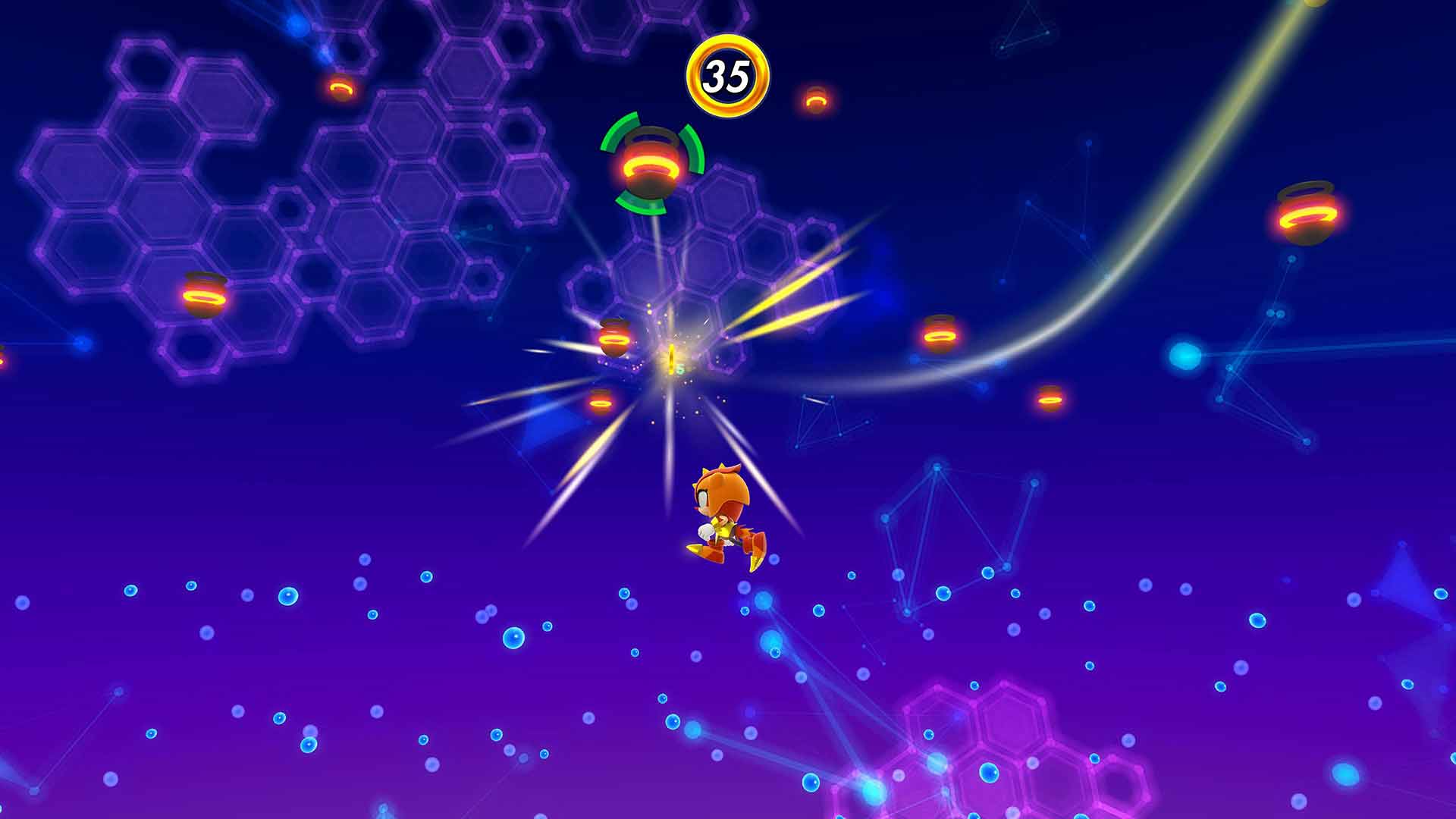 Because some of those fights are no pushover (especially the final boss), you’ll find yourself utilizing most of these special moves to great effect to discover more tactical strategies.
Because some of those fights are no pushover (especially the final boss), you’ll find yourself utilizing most of these special moves to great effect to discover more tactical strategies.
A tale of two halves
While I can praise Superstars‘ level design for being some of the best in the series, this unfortunately only applies to the first half of the game.
During the second half, I found the quality of the stages to decrease and sometimes become counterintuitive to what the level design was supposed to be about. While slow platforming challenges are not necessarily an exclusive issue to the 2D games, it’s more apparent in Sonic Superstars because of its earlier approach to the stage layout along with being a multiplayer game.
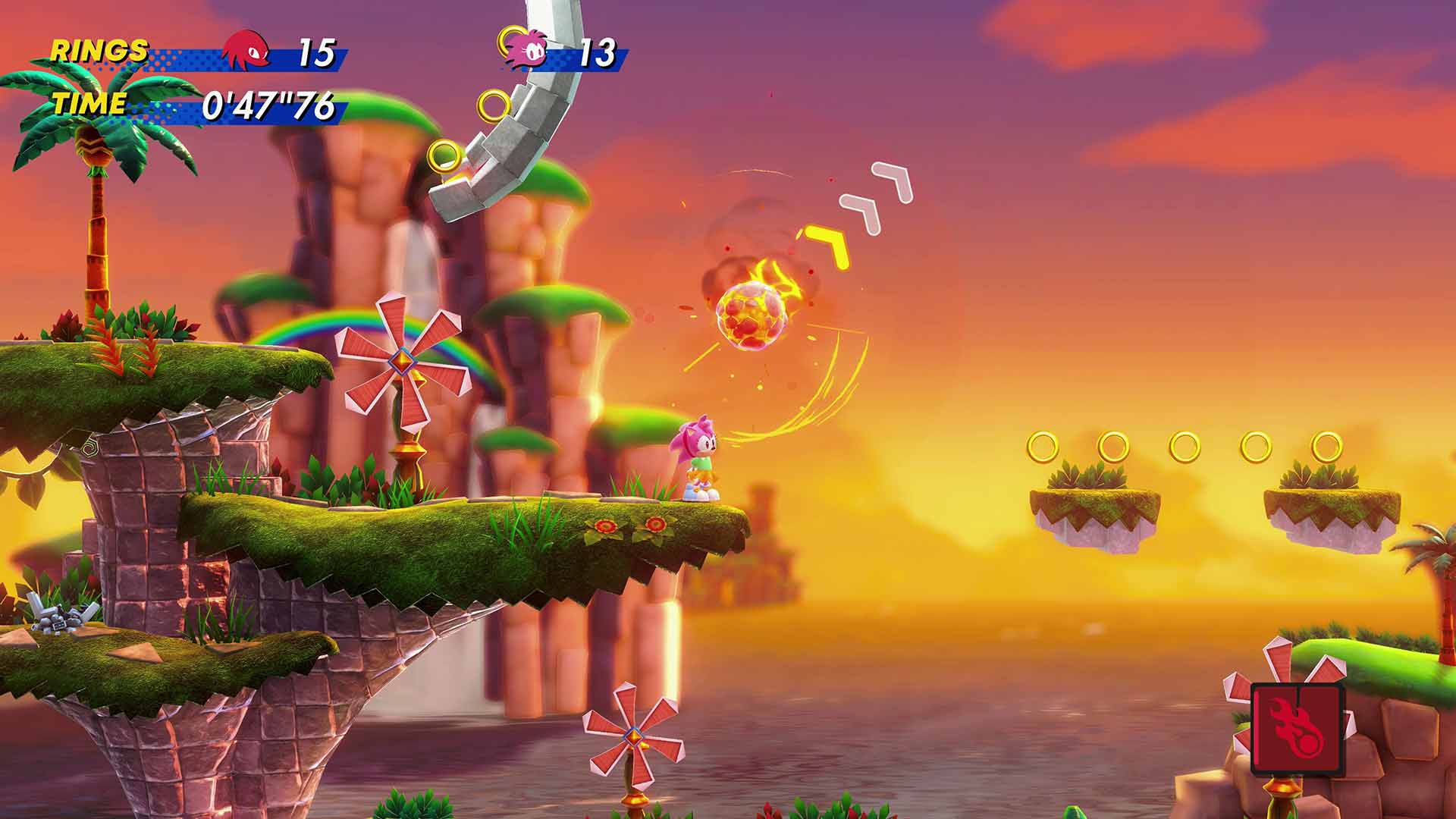 For example, there’s one act where there’s a short timer that automatically triggers a loss so you need to activate switches throughout the stage to reset the counter. Besides it being annoying if you’re speeding through the level only for one hiccup to set you back to a much earlier checkpoint, it also discourages exploration because you want to get to the end. Having these issues present in multiplayer creates a horrid combination.
For example, there’s one act where there’s a short timer that automatically triggers a loss so you need to activate switches throughout the stage to reset the counter. Besides it being annoying if you’re speeding through the level only for one hiccup to set you back to a much earlier checkpoint, it also discourages exploration because you want to get to the end. Having these issues present in multiplayer creates a horrid combination.
This decrease in quality also seeps into boss fights — notably the frustrating flying battle where you’re fighting more with the controls and cheap shots than with this game’s villain, Fang the Sniper.
Embracing the (super)power of teamwork
There are two caveats that make even the worst aspects of Sonic Superstars tolerable: the elimination of the lives system and multiple playable characters.
Though I can see the argument for having a lives system in place (or certainly as an option), I’ll always view it as an archaic mechanic that’s more frustrating than it’s worth. Because of my viewpoint, I’m glad that Sonic Superstars chose to abandon it, as it probably prevented a damaged controller near the end.
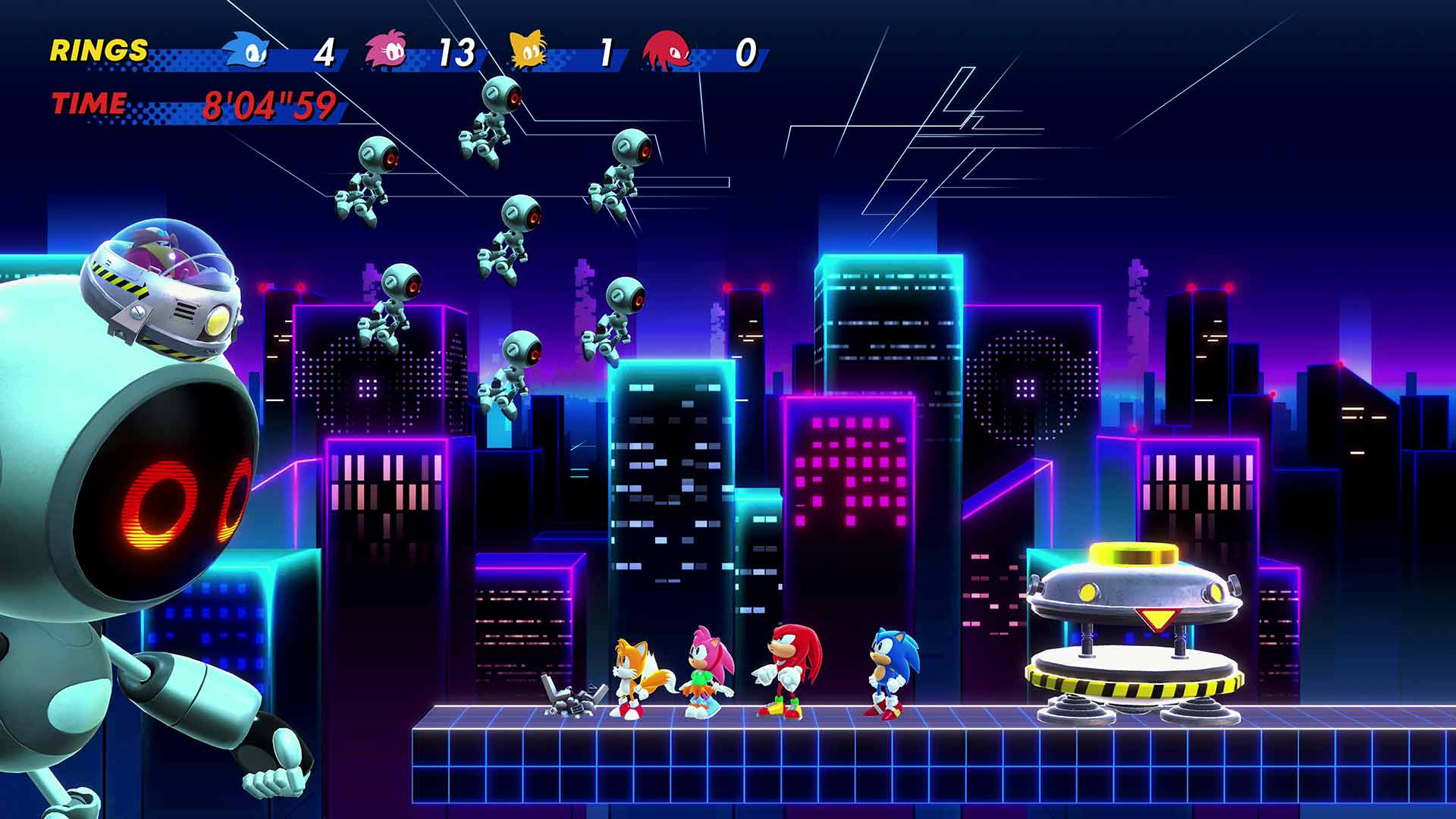 If you do find some challenges frustrating, you can switch to different characters, each with their own unique moves. For starters, Tails and Knuckles are back from Mania, with the former having the ability to fly while the latter can glide, break certain blockages and climb up walls.
If you do find some challenges frustrating, you can switch to different characters, each with their own unique moves. For starters, Tails and Knuckles are back from Mania, with the former having the ability to fly while the latter can glide, break certain blockages and climb up walls.
However, also joining the adventure this time is Sonic’s stalker companion Amy Rose, a pink hedgehog who can double-jump and use her hammer to destroy enemies, and Trip, a new unlockable character that initially helped Fang and Dr. Eggman in the story.
While I stuck with Sonic throughout my first playthrough, having more characters to play with is welcome as it adds more replayability and options in case you hit a snag.
No stardom with the music
Along with my issues with Sonic Superstars’ level design, my problems also extend to its music. Sonic games almost always have stellar soundtracks, regardless of the actual quality. For me, the music is just as important as the gameplay because it stamps an identity onto each title.
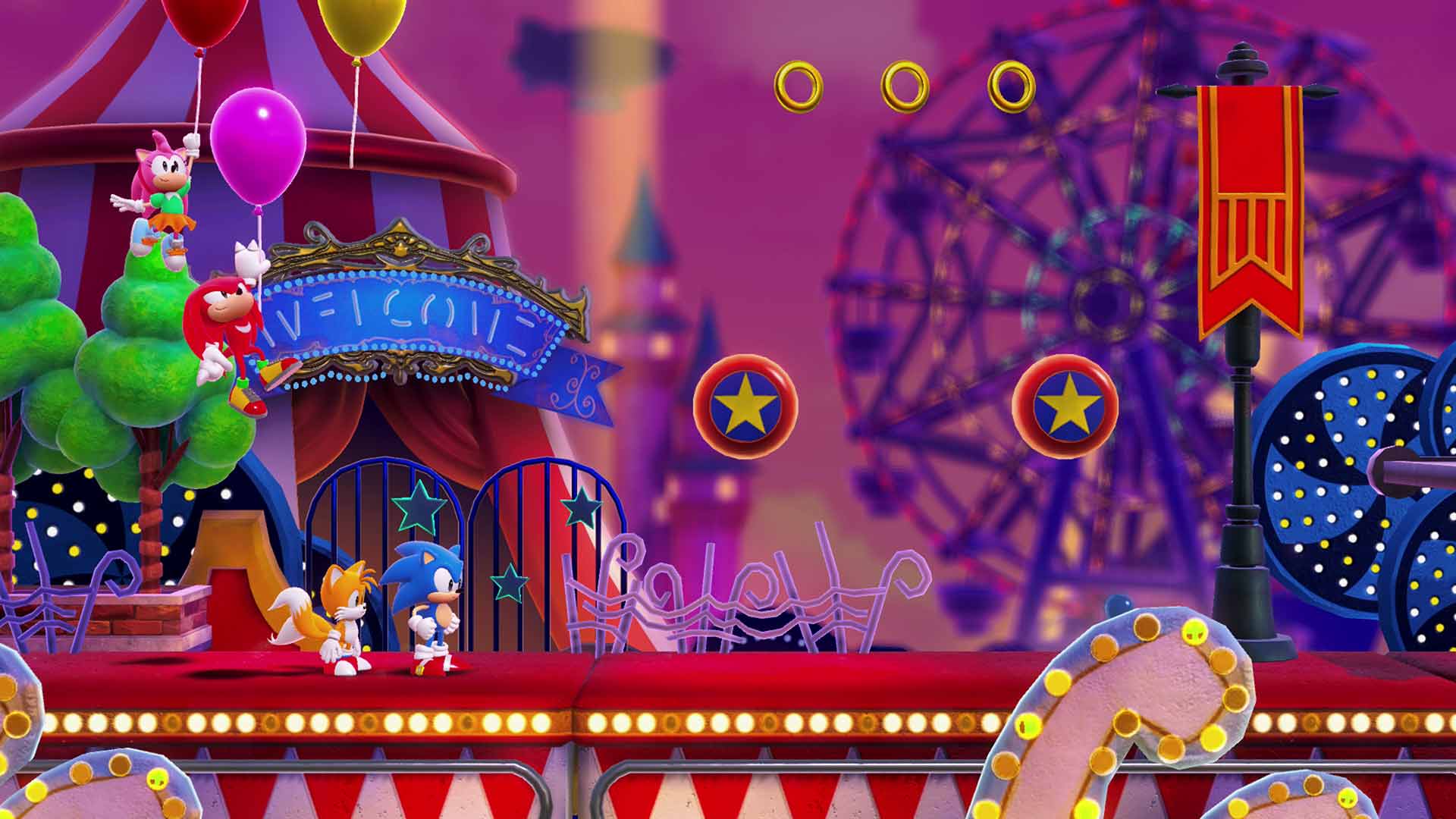 Unfortunately, Sonic Superstars has failed in this aspect because all of the tracks were forgettable. This soundtrack specifically reminded me of Sonic 4 (both Episodes 1 and 2), where songs either come off as decent background noise or noticeably lackluster.
Unfortunately, Sonic Superstars has failed in this aspect because all of the tracks were forgettable. This soundtrack specifically reminded me of Sonic 4 (both Episodes 1 and 2), where songs either come off as decent background noise or noticeably lackluster.
It’s a little bit of a surprise because composer Tee Lopes created such bangers in Mania as “Lights, Camera, Action!” and “Rogue’s Gallery.” That said, I feel that the main composer Jun Senoue held this soundtrack back. I adore the man, especially his work with Sonic hard rock band Crush 40, but his work on ‘classic’ Sonic games leaves more to be desired.
Complicated love
Overall, my feelings on Sonic Superstars are a little complex.
While the level design (for the most part) and gameplay changes create a really fun experience, some frustrating elements and forgettable music result in the game stumbling across the finish line. The underwhelming battle mode, where you customize an avatar and play battle royale mini-games either locally or online, also doesn’t elevate my enjoyment.
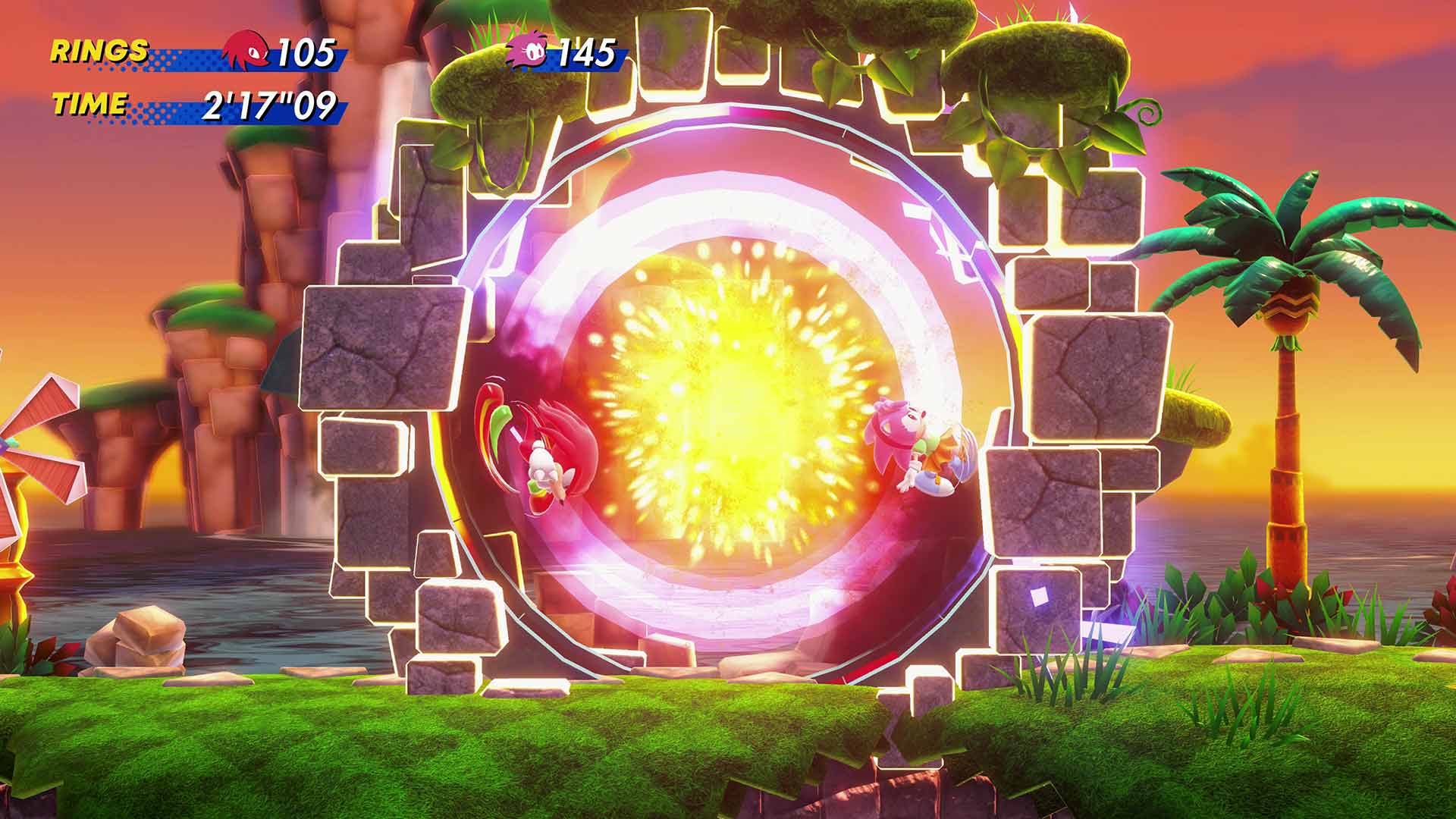 However, this doesn’t mean that Sonic Superstars still isn’t a great game overall, especially when it improves upon Mania in certain aspects. Now that Sega finally has a solid foundation for both 2D and 3D Sonic games, my hope is that Sonic Team continues to build and improve going forward.
However, this doesn’t mean that Sonic Superstars still isn’t a great game overall, especially when it improves upon Mania in certain aspects. Now that Sega finally has a solid foundation for both 2D and 3D Sonic games, my hope is that Sonic Team continues to build and improve going forward.
Sonic Superstars will launch on PlayStation 4/5, Xbox One, Xbox Series X/S, Nintendo Switch and PC on October 17th, 2023 for $79.99.
MobileSyrup utilizes affiliate partnerships. These partnerships do not influence our editorial content, though we may earn a commission on purchases made via these links that help fund the journalism provided free on our website.
Image credit: Sega
>>> Read full article>>>
Copyright for syndicated content belongs to the linked Source : MobileSyrup – https://mobilesyrup.com/2023/10/16/sonic-superstars-review/?utm_source=rss&utm_medium=rss&utm_campaign=sonic-superstars-review































